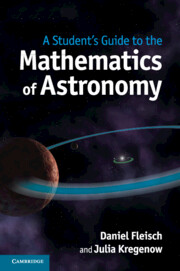2 - Gravity
Published online by Cambridge University Press: 05 June 2014
Summary
Even before taking an astronomy class, most people have a sense of how gravity works. No mathematics is needed to understand the idea that every mass attracts every other mass and that gravity is the force that causes apples to fall from trees. But what if you want to know how much you'd weigh on Saturn's moon Titan, or why the Moon doesn't come crashing down onto the Earth, or how it can possibly be true that you're tugging on the Earth exactly as hard as the Earth is tugging on you? The best way to answer questions like that is to gain a practical understanding of Newton's Law of Gravity and related principles.
This chapter is designed to help you achieve that understanding. It begins with an overview of Newton's Law of Gravity, in which you'll find a detailed explanation of the meaning of each term. You'll also find plenty of examples showing how to use this law – with or without a calculator. Later sections of this chapter deal with Newton's Laws of Motion as well as Kepler's Laws. And like every chapter in this book, this one is modular. So, if you're solid on gravity but would like a review of Newton's Third Law, you can skip to that section and dive right in.
- Type
- Chapter
- Information
- A Student's Guide to the Mathematics of Astronomy , pp. 41 - 65Publisher: Cambridge University PressPrint publication year: 2013

